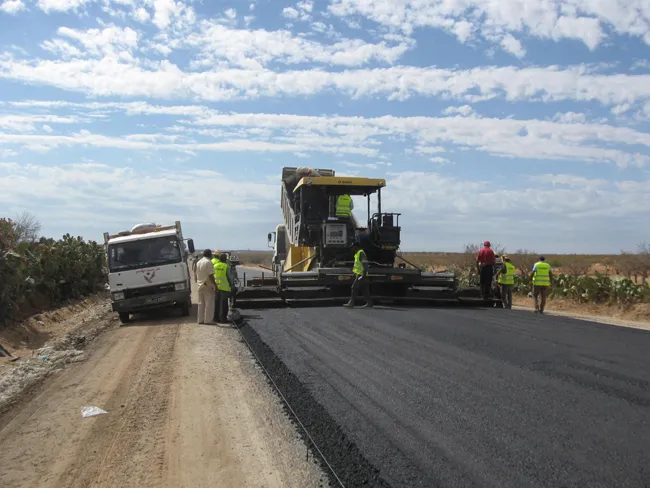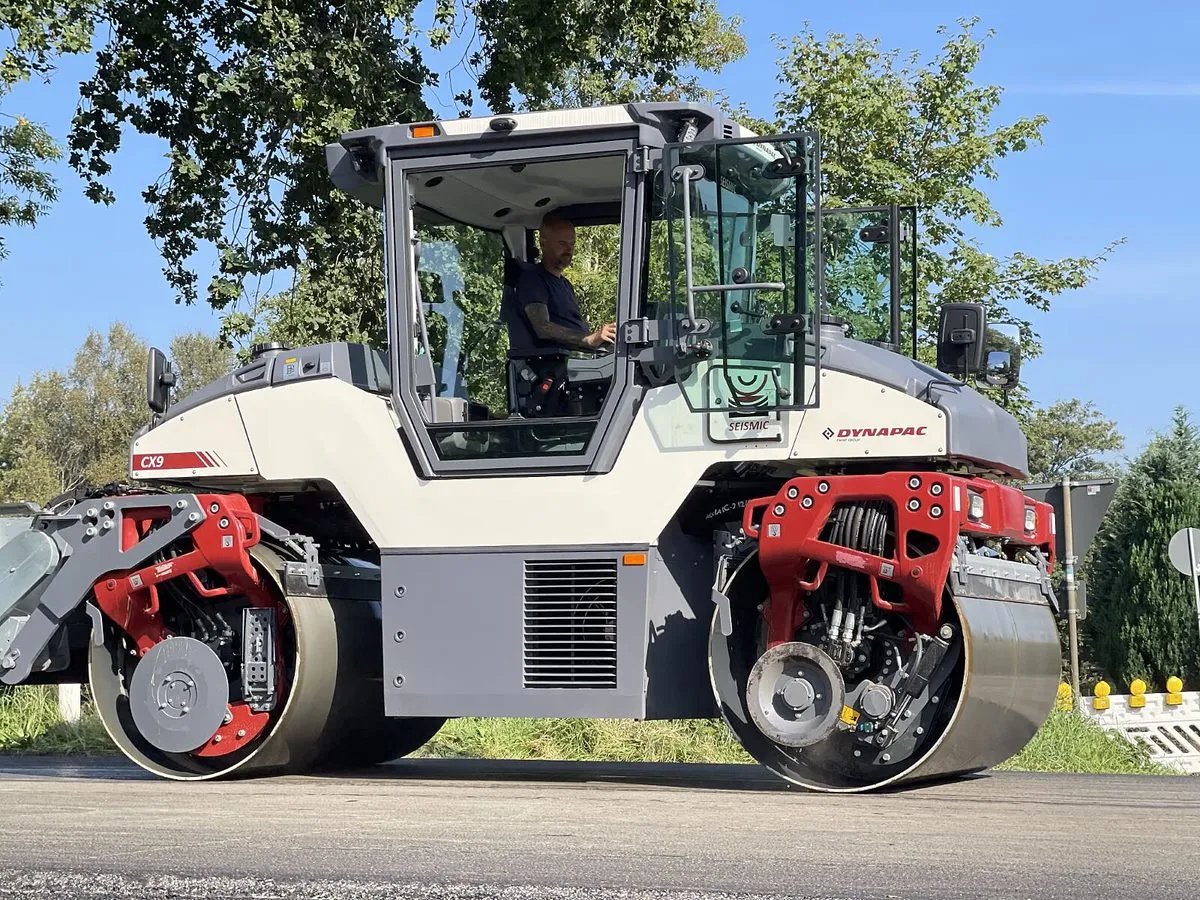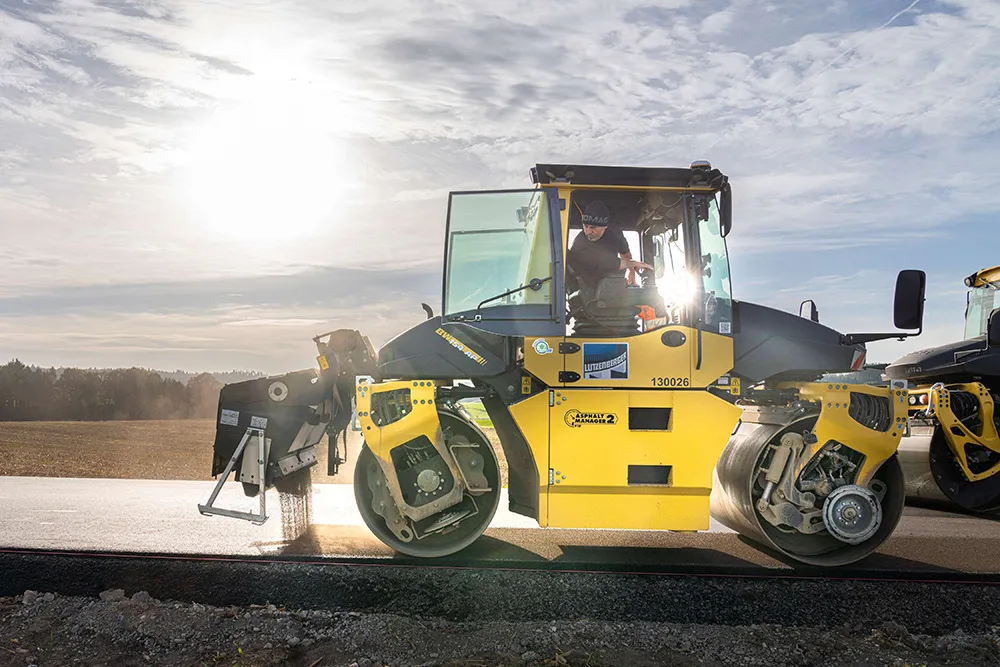
Machines from BOMAG have played an important role in the rebuilding of an important road link in Tunisia
Local contractor Société el Oukhouwa d’Infrastructures et Travaux (SOIT) carried out the work in Tunisia’s coast region, approximately 45km north of the city of Sfax. This project was for the redevelopment of a national road that connects the coast region with the A1 motorway. Within the project, sections of the old asphalt construction were removed and fully renewed.
The average requirements applicable in Tunisia for layer thicknesses in this road category are between 100mm and 160mm for the bearing course, using a grain size of 0/20mm. On roads with lower traffic volumes meanwhile, the layer thickness ranges from 80-140mm with a grain size of 0/14mm.
SOIT opted to use
The job involved laying a bearing course in two layers, including a levelling layer. The bearing course structure for Tunisia’s national roads has to be undertaken according to certain specifications. For a two-layer placement and a grain size of 0/20mm with 40/50 bitumen, a layer of 50-80mm is laid, including a levelling layer, and then a second layer of 70mm.
The planned road structure meets the average values and minimum requirements for grain sizes of 0/20mm and layer thicknesses up to 160mm. According to this, a 60mm thick top layer is then provided with high-strength mix.
The mix was placed with a BOMAG BF 800 C paver set to a 7.5m working width. For this, the 6m maximum screed width was extended with two attachments of 0.75m each. The drum crown profile was set to 2%.
Typically, construction sites in this region of North Africa (as well as throughout the Middle East) are pre-compacted right after the paver with pneumatic tyred rollers weighing 14-20tonnes. Next came two vibration passes with the BW 161 ADO-50 at low amplitude. It was important to compact the mix carefully with as few passes as possible to prevent crushing the aggregate or any subsequent crushing which produces visible white spots. Oscillation with the BW 161 ADO-50 was then used for the final compaction and to give a good finish on the road surface.
The BW 161 ADO-50 is usually used for 1-2 systematic passes using vibration at the end of the day to level out the transverse joint. However this can result in over-compaction with aggregate crushing. The TanGO system was able to demonstrate that the levelling could also be carried out more gently and without risk of crushing the aggregate.
After completing the bearing course, SOIT, was impressed by the power and versatility of the BW 161 ADO-50, as the roller operator was quick to recognise the advantages of the TanGO roller and was able to make the most of these on the special mix.









